Geese on a Budget
Here's how to bag more honkers without breaking the bank
Here's how to bag more honkers without breaking the bank
By Wade Bourne
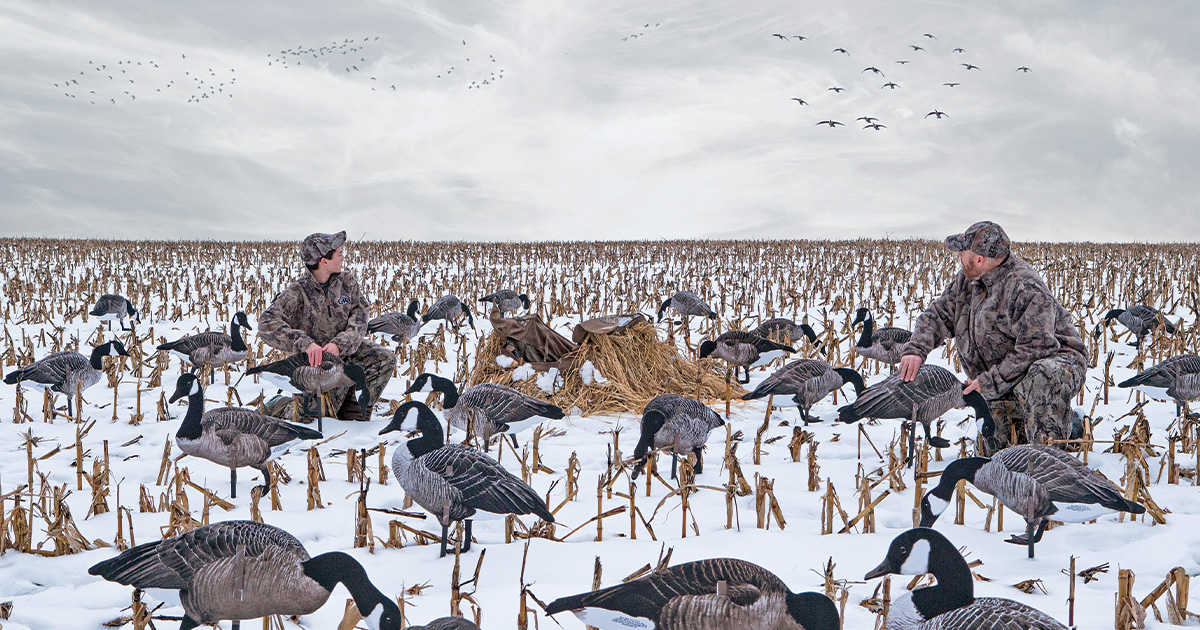
You see them on outdoor TV shows-goose guides driving monster pickup trucks and pulling decal-covered trailers loaded with full-body decoys, ATVs, portable blinds, flags, and other gear. All that equipment is useful, to be sure. But make no mistake: the average hunter doesn't need to haul around a ton of gear to score big on geese.
Former world goose calling champions Field Hudnall and Kelley Powers advise hunters against mistaking these accoutrements of success as necessities for it. Hudnall, who owns Field Proven Calls, started goose hunting with his brother when they were just old enough to drive. "I had a Ford Ranger pickup, and we carried our decoys in the bed in plastic garbage bags," Hudnall says. "When we got to our hunting spot, we'd each grab a bag full of decoys, a gun, and other gear, and then slog out across those muddy northern Kentucky fields. We were lucky if those bags made it through one hunt, but they got the job done. We shot a lot of geese despite our meager circumstances."
Powers experienced a similar hardscrabble initiation into the sport. Like Hudnall, he made his own decoys and hunted geese from homemade blinds. Both men believe that great goose hunting can still be a bargain if you scout effectively, work persistently, and hunt intelligently.
Here's their advice on how to experience quality goose hunting without shooting holes in your budget.
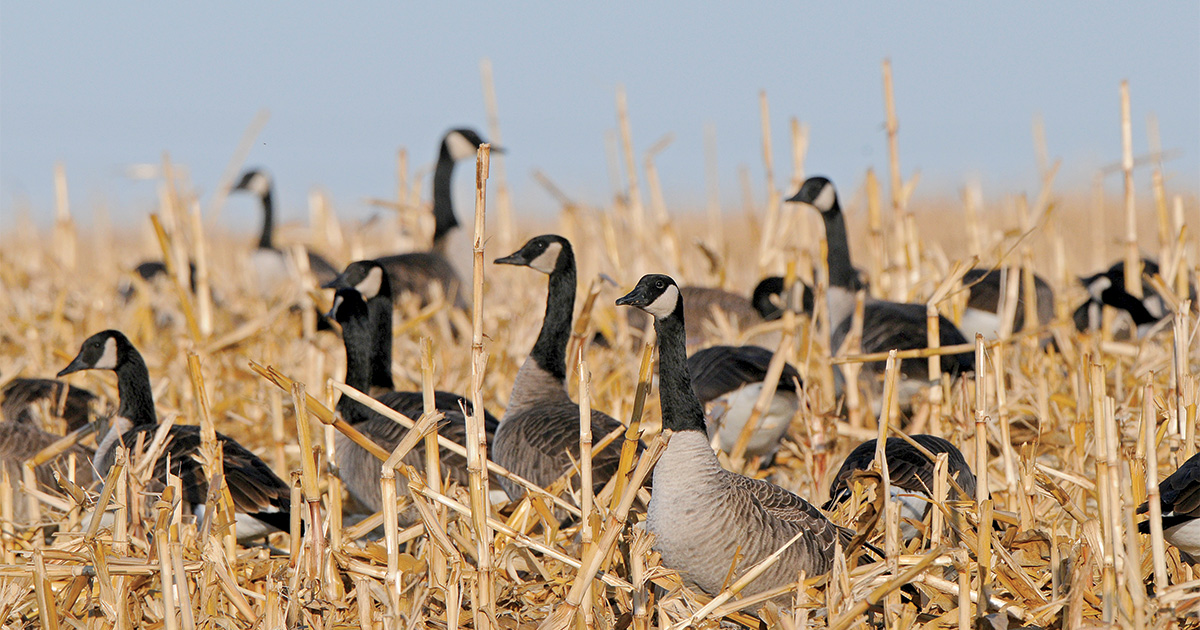
"In goose hunting, nothing is more important than being set up on the exact spot where geese are coming to feed," Powers says. "This is why scouting is the great equalizer. The big-rig guys don't have any advantage. Whoever scouts the best, finds the birds, and gets permission to hunt them usually wins. If you're on the X, you can shoot plenty of geese with minimal decoys and equipment."
Geese will typically feed in the same field for several days in a row, as long as food is available and the birds aren't scared off by hunting pressure. "If you pinpoint a feeding flock in the afternoon, there's a good chance the geese will return the next morning. Get there early, set up before dawn, and wait for the birds to come in after sunup," Hudnall advises.
In areas where there's a lot of hunting pressure, waterfowlers should look for smaller concentrations of geese. "Small groups of birds aren't likely to draw much attention from guides and other waterfowlers," Hudnall says. "But these more modest-sized flocks can provide plenty of shooting for two or three hunters. If you can pull a couple of bunches over the decoys, that may be enough to fill your limits."
Scouting for geese in fringe areas is another good idea. Geese sometimes feed where hunters don't expect to find them, especially when hunting pressure has scattered them away from traditional feeding areas. "Those birds can be a boon for budget hunters," Powers says. "You just have to drive the backroads and keep looking for flying birds, then follow them to where they're feeding. There's no shortcut or trick to doing this. You simply have to be persistent and keep scouting to find them."
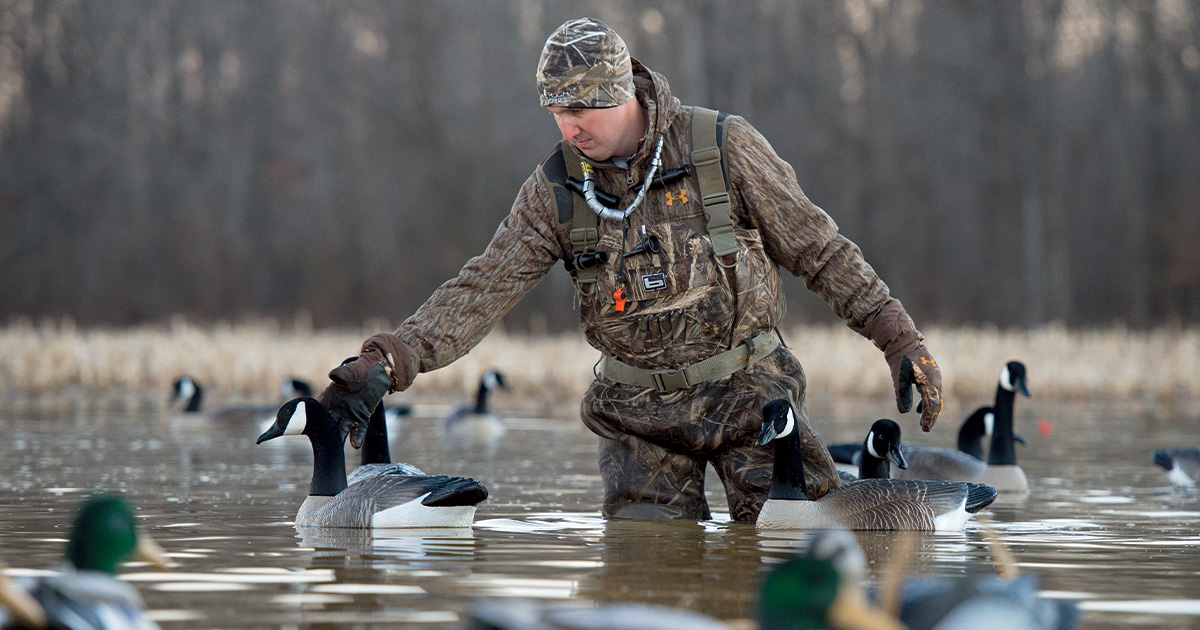
Another good place to encounter overlooked geese is on ponds and potholes. "Canada geese, especially, hit these places to loaf and drink after feeding in the morning," Hudnall says. "Because few waterfowlers hunt geese over water, the birds feel secure, which means you can usually lure in good-sized flocks with just a few decoys."
One of Hudnall's favorite strategies is to scout for pasture ponds where geese are loafing. These ponds are usually in areas where the big birds are feeding. After finishing their morning meal, geese often make a short flight to water to rest during the midday hours. "I find these places by following geese from feeding fields to loafing ponds," Hudnall says. "Or I'll ask anybody I can think of-farmers, mailmen-if they've seen geese working a pond. If I can find such a spot and get hunting permission, I'll have a nice chance for a good shoot."
To hunt a loafing pond, Hudnall usually sets just two or three floating decoys on the water and a few more full-body decoys along the bank. He then hides in nearby cover or in a layout blind, waiting for the birds to arrive. When they do come, the geese usually attempt to land on the water outside the floaters.
Large lakes and rivers also offer plenty of opportunities, says Hudnall, who has enjoyed many good hunts on sandbars and islands along the Missouri and Ohio Rivers. "These places can be very predictable," he says. "If you find geese working a sandbar or a river chute one day, they'll likely be back the next. In my experience there's not much competition from other hunters on rivers and lakes, and you can hunt these larger waters with minimal decoys and equipment. You just have to have a boat that's dependable and seaworthy to get you out there and back."
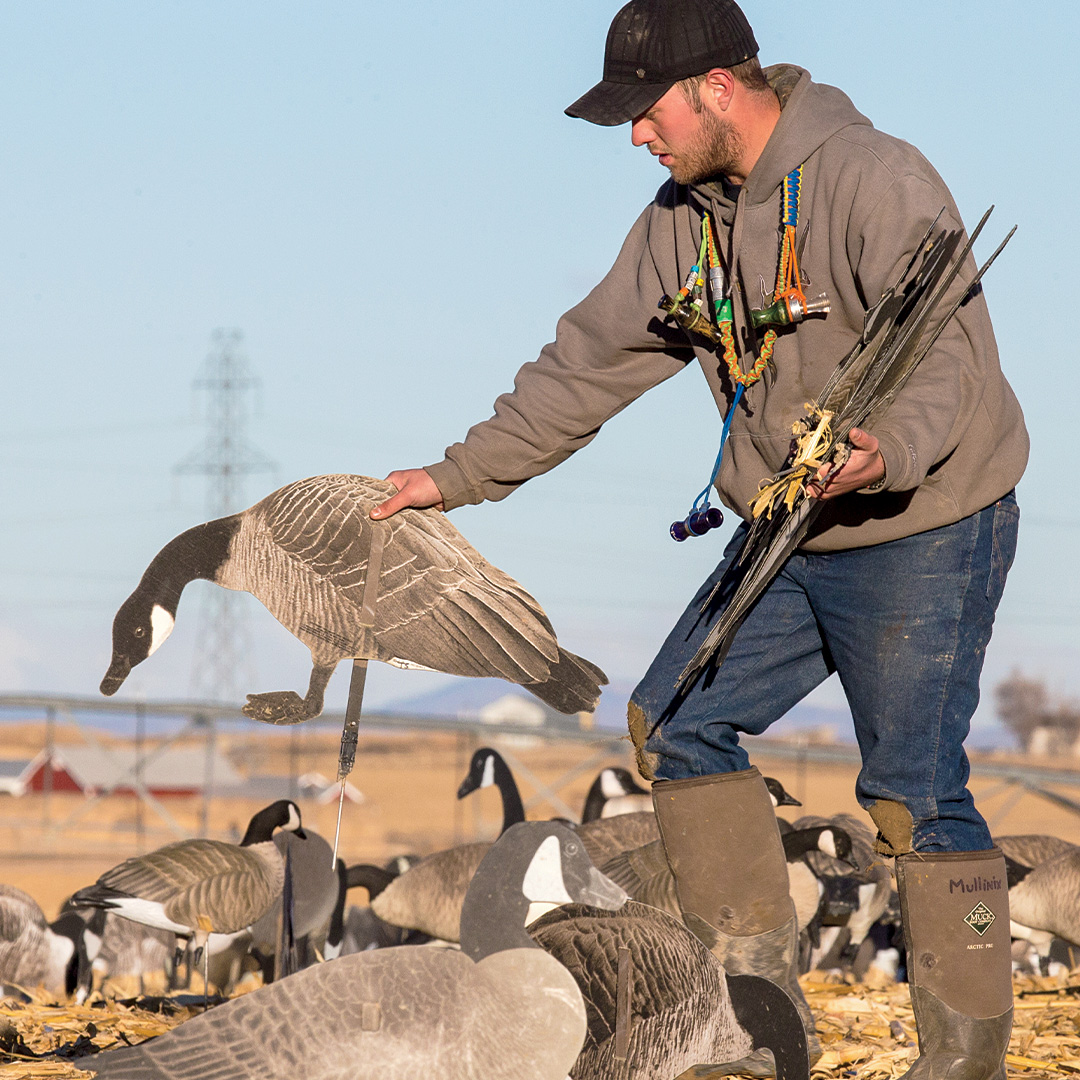
Flocked full-body goose decoys are hard to beat in terms of realism, but they're expensive, bulky, and difficult to transport. Powers recommends several alternatives that are cheaper, less cumbersome, and yet just as effective as full-bodies in many goose hunting situations.
Shell decoys top Powers's list of must-have goose attractants. "They stack for easy portability and offer a three-dimensional look," he says. "From above, which is a goose's point of view, they look as persuasive as full-bodies."
Today's commercial silhouette decoys are another good choice. "Silhouettes are lifelike and tough, and you can use them exclusively or mix them in with shell or full-body decoys," Powers says. "They're a good way to increase your spread's visibility without breaking the bank. Plus, you can put a lot of silhouette decoys in a bag, and they're easy to carry in a pickup or on your back."
Using fewer decoys is also a great way to save money. Powers says there are just two reasons to put out a large decoy spread for geese. "If you're not on the X and you want to pull passing birds off their flight paths, then you'll need to set up a big spread for visibility and drawing power," he explains. "The only other time you need numbers is when you're trying to hide a lot of hunters in the spread. Otherwise, if you're in the right spot, a dozen decoys can be enough for a good hunt."
Smaller spreads look natural to geese, Powers adds. "Big flocks of feeding geese start out as one small flock and grow as more geese come in. A modest spread looks like a feeding flock that's just landed," he says.
According to Hudnall, budget-minded hunters should also scour the used-decoy market for bargains. "There's no rule that says you have to buy new decoys," he says. "Manufacturers will from time to time offer discounts on slightly used decoys. Sometimes you can find good deals on secondhand decoys online. I've seen hunters sell their old decoys on waterfowl forums and on Facebook."
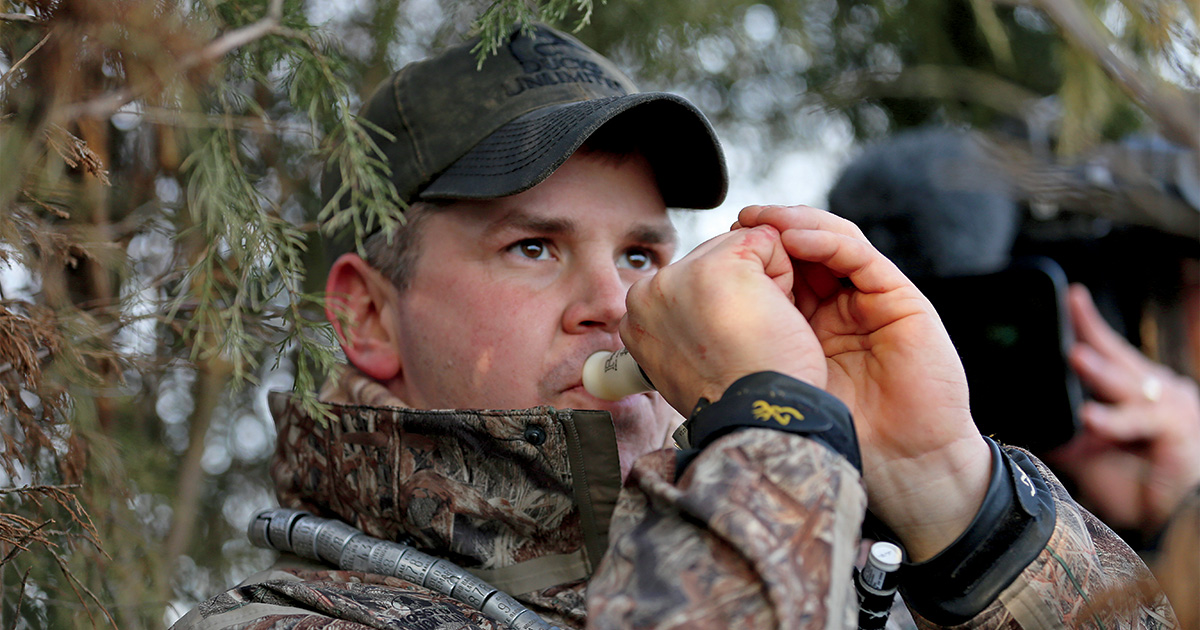
Another way to increase your chances for success without spending a lot of money is to hone your calling skills. "You can definitely make up for a lack of decoys with good calling," Hudnall says. "One or two callers working together can be very persuasive to passing geese. The calling gets their attention first, and then the modest spread gives them something to home to. This is how my brother and I grew up hunting, with lots of calling and just a few decoys."
Hunters don't necessarily need to purchase an expensive call to make enticing goose sounds, either. There are several moderately priced goose calls on the market, and good calling lessons are available free of charge on YouTube.
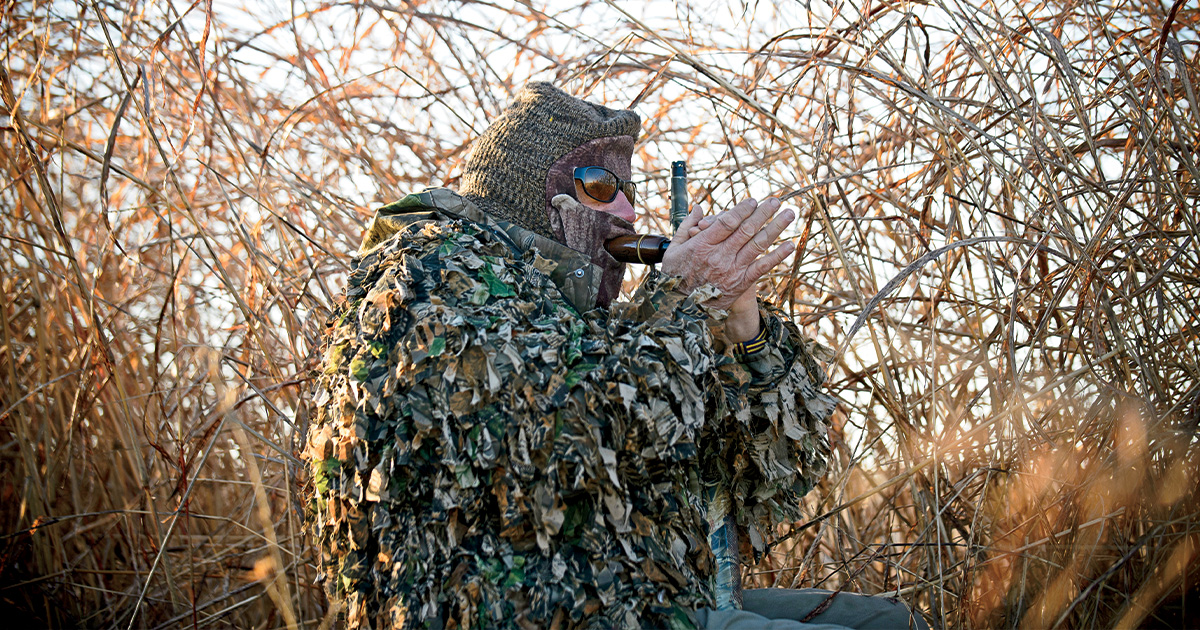
In recent years, layout blinds have become standard equipment for hunters attempting to hide from geese in open fields, pastures, and other places that offer sparse cover for concealment. These low-profile blinds may be highly effective, but they're not cheap, which is why Hudnall considers them a luxury item for goose hunters on a budget.
"There are other, less expensive ways to hide from geese," Hudnall says. "I've shot a lot of geese in years gone by while lying on the ground under a piece of burlap. Other cut-rate concealment tactics include digging a shallow pit, hiding beneath decoys set on tall stakes, and using natural camouflage such as cattails, willows, fencerows, and other forms of native cover."